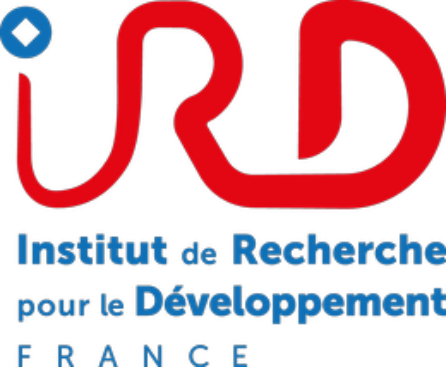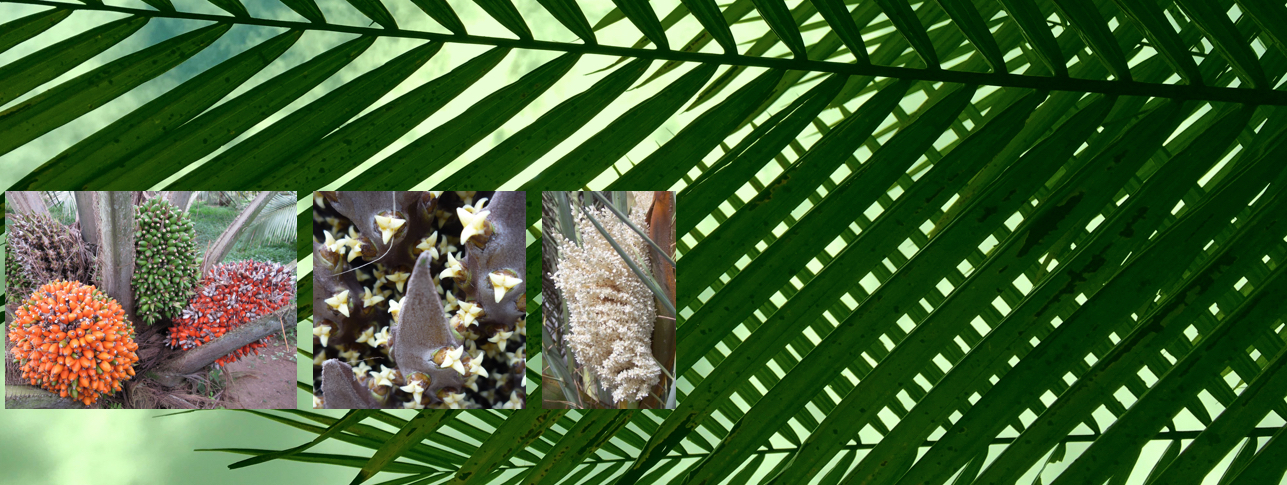The main objective of the F2F group is to study the key processes governing flower and fruit development of the two most important cultivated palms; date palm and oil palm. The main research topics include floral induction and development, sex determination, fruit ripening and abscission, and seed maturation and germination.
Sex Determination and Sex Chromosome Evolution in the Palm Family
Date palm (Phoenix dactylifera) is a dioecious species i.e. male and female flowers are borne by different individuals. Its sexual reproduction gives progenies comprising about 50% female date-producing plants and 50% unproductive males. Sex identification of the plant is possible after 6 to 8 years when the first blooms are emitted. We identified microsatellite markers with specific male alleles in sex-linked date palm genomic regions. Our data brought genetic evidence of an XY type chromosomal system and we showed that sex chromosomes evolved from a common autosomal origin before the diversification of the extant Phoenix species (Cherif et al., 2016, Projects ANR NGSex and Qatar Foundation).
Relying on knowledge acquired on Phoenix sex chromosomes, the sex-linked regions will be characterized in other dioecious palm species (Borassus, Phytelephas, Kerriodoxa). The comprehensive study of sex determination processes opens the way towards the selective female reproductive development leading to enhanced fruit and seed production. The Palm family is of particular interest since unlike other angiosperms, which mainly bear hermaphroditic flowers, it has a significant proportion of unisexual flowering species (monoecious or dioecious or intermediate forms). The separation of the sexes is supposed to have evolved several times independently during the evolution of the family of palms. The question of common region and processes leading to the sex separation in dioecious palms will be addressed using genome sequencing.
Regulation of Oil Palm Inflorescence Development
Inflorescence development is highly sensitive to a variety of stresses. It is therefore important to characterize how this phase is regulated in order to understand how the environment impacts production. Thus, we focus on the effects of drought on gene expression and phenomenon of early inflorescence abortion, and we study a floral abnormality that is generated by the in vitro cloning process.
Fruit Development, Abscission, Physiology and Metabolism of Palms
- Lipid diversity and biosynthesis of palms fruits
- Lipidmap project - Fruits and seeds lipid metabolism in palms.
- VitaPalm project - Genetic determinants of vitamin E and pro-vitamin A contents in palm oil. Funded by PalmElit SAS.
- Identification of molecular markers for three characters of oil palm fruit maturation
- G3As project - Genetic determinants of 3 fruit traits of interest: bunch age at harvest, abscission and oil acidity. Funded by PalmElit SAS.
- Fruit Abscission
- Between 2014 and 2022, our research on fruit abscission has qualified oil palm as the monocot fleshy fruit model. Major results include evidence that the IDA–HAE–HSL2 (INFLORESCENCE DEFICIENT IN ABSCISSION-HAESA-HAESA-LIKE2) abscission regulatory pathway functions in the abscission zone (AZ) (Stø et al., 2015; Tranbarger and Tadeo, 2020), where the IDA peptide has hormone-like bioactivity to enhance oil palm fruit abscission (Tranbarger et al., 2019). A detailed cellular characterization of the oil palm fruit AZ cell layers identified dynamic pectin changes that take place in specialized AZ cells (Roongsattham et al., 2016). A phenotyping methodology was developed (Fooyontphanich et al., 2016) and used to examine the environmental variables that affect oil palm fruit abscission (Tisné et al., 2020), and for a QTL approach underway. Global transcriptome analyses defined specific gene expression that occurs in the AZ during ripe fruit abscission of E. guineensis (Fooyontphanich et al., 2021), while another study with a non-fruit-shedding variant of E. oleifera (American oil palm) allowed a comparison between the ripe fruit abscission processes of the African and American oil palm species at the molecular level and revealed commonalities with environmental stress pathways. This collaborative work involves groups in Montpellier, Europe, Africa and South America, an intra-unit collaboration with the ADvENS team, and in particular, benefited from a privileged collaboration with PalmElit SAS, the French oil palm seed company.
- Abscission project - Molecular determinants of fruit abscission in Elaeis. Funded by PalmElit SAS.
Physiology of Palms Seeds Preservation and Germination
- GermPalm project - Physiology of oil palm seeds preservation and germination. Funded by PalmElit SAS.
- Dormpalm project – Identification of biological processes associated dormancy release in oil palm seeds
- CryoPalm project - Cryopreservation of oil palm seeds. Funded by PalmElit SAS.
- Biology and preservation of seeds from African fan palm species: Borassus aethiopum and Borassus akeassii
Genetic Diversity and Reproductive Development of the African Fan Palm (Borassus aethiopum Mart.)
Through this project led by a Beninese partner, we study a palm species of relevance for rural West African economy and for which little data is available.
Professional Expertise in in vitro Micropropagation of Palms and Development of Biotechnological Tools
Within the environment of the GeneTrop platform, the implementation of our expert knowledge of in vitro micropropagation of palm species through somatic embryogenesis enables us to develop biotechnological tools supporting our research in functional biology. Our latest works focus on setting up operational genetic transformation protocols, which require the production and maintenance of specific in vitro-propagated tissues (calli, embryos, protoplasts, nurse cells, etc).
Collaborations (Past and Present)
Centre de recherches agricoles - Plantes Pérennes (CRA-PP), Benin
European Network of Palm Scientists (EUNOPS)
Institut Jean-Pierre Bourgin, Versailles, France
IVIA - Centre De Genomica, Spain
PT SMART, Indonesia
Pontificia Universidad Católica del Ecuador (PUCE), Ecuador
Qatar Foundation, Qatar
SAS PalmElit, France
SIAT, Nigeria
Socfindo, Indonesia
UMR AGAP (CIRAD, INRA), France
UMR CNRS 5558 - LBBE "Biométrie et Biologie Evolutive" UCB Lyon
UMR IPME (IRD, UM, CIRAD), France
Universidad de los Andes, Bogotá, Colombia
Universidad Militar Nueva Granada, Bogotá, Colombia
Université d'Abomey-Calavi (UAC), Benin
University of Hohenheim, Germany
University of Kasetsart, Thailand
University of Oslo, Norway
Université Ouaga, Burkina Faso
University of Walailak, Thailand
Updated 07/07/2022



